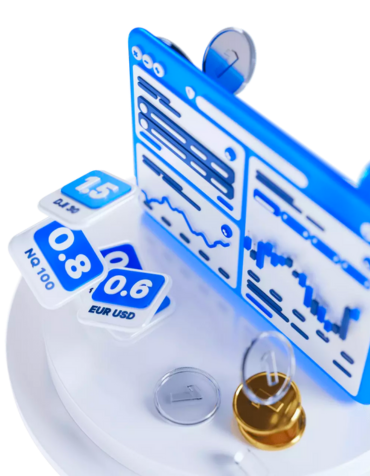We round up the best brokers that we believe offer best value for forex traders.





Trading the EURUSD forex pair involves buying or selling it in the foreign exchange (forex) market. Here are the basic steps to trade EURUSD:
To trade any forex pair, including EURUSD, you'll need to open an account with a reputable forex broker. Ensure that the broker offers access to this specific EURUSD pair.
Deposit funds into your forex trading account. The amount you deposit will determine the size of your trading positions.
Before making any trades, perform a thorough analysis of the EURUSD pair. This analysis typically involves fundamental analysis (economic data, interest rates, geopolitical events) and technical analysis (price charts, indicators) to determine your trading strategy.
Most brokers offer trading platforms that allow you to execute trades. Familiarize yourself with the platform's interface and tools.
Choose whether you want to buy (long) or sell (short) the EURUSD pair based on your analysis. Enter the trade order on your trading platform, specifying the amount (lot size) you wish to trade.
Executes the trade immediately at the current market price.
Sets a specific price at which you want your trade to be executed.
Sets a price at which your trade will be triggered if the market moves in a certain direction.
To manage risk, consider setting stop-loss orders to limit potential losses and take-profit orders to lock in profits at a certain price level.
Once your trade is executed, monitor the EURUSD pair's price movement. Keep an eye on news and events that may impact the exchange rate.
When you achieve your trading objectives, either manually close the trade or wait for your predetermined take-profit or stop-loss levels to be reached.
After closing your trade, assess the outcome. Review your trading strategy and learn from both successful and unsuccessful trades to improve your skills.
Always practice proper risk management. Never risk more than you can afford to lose, and consider using leverage cautiously if available.
The breakout strategy is all about making the most of big price movements that happen after a period of consolidation or when prices have been trading within a certain range. Here's how you can use this strategy:
First, take a look at the EUR/USD chart and identify the key support and resistance levels. These are important because they show where prices tend to stop and reverse.
Next, wait for the price to break above a resistance level or below a support level with strong momentum. This is your signal to enter a trade.
If the price breaks above resistance, go for a long position. On the other hand, if it breaks below support, opt for a short position.
To protect yourself from potential losses, set stop-loss orders below the breakout point. This way, if things don't go as planned, you can limit your losses.
Finally, when it comes to taking profit in this strategy, you can set targets based on previous price swings or technical indicators. This will help you determine when it's time to cash in on your successful trade.
Now let's move on to the trend following strategy:
The goal of this strategy is to ride sustained trends in the market. Here's how you can do it:
Start by determining which way the prevailing trend is going by using technical indicators like moving averages, trend lines, or oscillators.
If there's an uptrend happening, keep an eye out for opportunities to enter long positions when prices pull back towards key support levels.
On the flip side, if there's a downtrend going on instead, look for chances to enter short positions when prices rally towards key resistance levels.
To protect yourself from potential losses in these trades as well, place stop-loss orders beyond recent swing highs (for shorts) or swing lows (for longs).
As your trade progresses and starts making profits (fingers crossed), trail your stop-loss orders along with it. This will help safeguard your gains and capture even more profits.
Lastly, let's talk about the range trading strategy:
This strategy is all about taking advantage of periods when currency pairs are trading within well-defined ranges without establishing clear trends. Here's how you can make the most of it:
Start by identifying the upper and lower boundaries of the range. These are levels where prices tend to bounce between horizontal support and resistance levels over time.
Wait until prices reach either boundary before entering trades. If prices are near a support level, consider buying. And if they're close to a resistance level, think about selling.
To